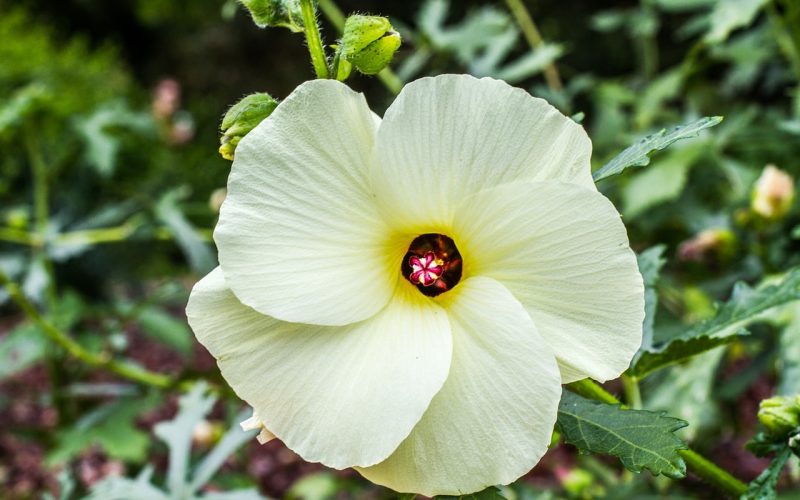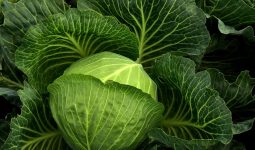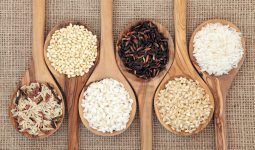There are various species of hibiscus in the world today. In the same vein, there are several types of edible hibiscus too.
Although it is sometimes grown for ornamental and aesthetic purposes, the hibiscus plant is more than a pretty face.
Some species of this plant are well known for their culinary and medicinal applications.
The hibiscus flowers can grow as large as 6 inches in diameter and are found in a wide array of colors- red, white, yellow, and shades of pink.
In various places worldwide, the flowers are used in culinary arts.
In China, the flower petals of some species are baked in cakes. Their flowers can also be eaten straight from the plant, although they are mostly used for herbal tea.
The tea here is usually bright red with a tart, somewhat sour flavor.
Although taken hot by some people, it makes a refreshing drink over ice. In India, they are boiled with sugar into a sweet, iced drink.
Some species of hibiscus can be used as food and food flavoring too. The leaves are sometimes put raw into salads.
In some parts of the world, the young, tender leaves of the plant are cooked and eaten like spinach.
The edible pods of some cultivars like okra are usually consumed as a sort of vegetable or thickener in soups and stews in West Africa.
Hibiscus stalks are sometimes added to soups in Central America to give them a tart citrus flavor.
Nevertheless, the edible parts of the hibiscus plant are the flowers, leaves, and fruit.
Consuming breeds specifically known for their legibility is also ideal because not all species are safe to eat. Below are some types of edible hibiscus.
Read on.
Types of Edible Hibiscus
1. Chinese Hibiscus
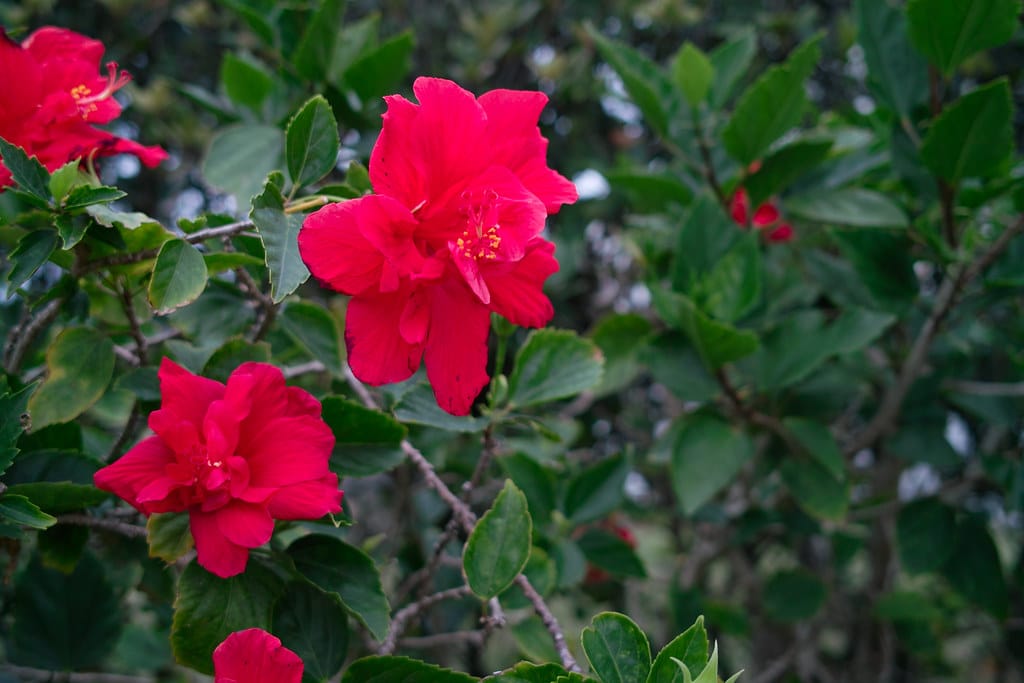
Chinese hibiscus is among the types of edible hibiscus. This hibiscus has other common names like China rose, Hawaiian hibiscus, and Shoeblack plant, while its scientific name is Hibiscus rosa-sinensis.
Chinese hibiscus, as its moniker suggests, is native to Asia. It is a species of tropical hibiscus that does well through the year in warm climates.
This hibiscus grows very quickly and can reach 10 feet tall.
The plant has large shiny dark green leaves and attractive colored flowers that bloom abundantly through fall, spring, and summer, but each flower only lasts a few days.
The flowers come in various shades of colors, such as white, pink, orange, peach, yellow, blue, and purple.
Chinese hibiscus can be planted in a container to be moved inside during winter in colder climates since it does poorly at temperatures below 60 degrees Fahrenheit.
The leaves and flowers of this plant have been consumed as teas, and they have also been used in salads throughout the Pacific Islands.
The flowers have a mild tangy flavor and are edible. In culinary arts, the flowers have been used in several ways.
They can be added to rice, in chutney, made into syrup, and added to cake, or frozen into popsicles with champagne.
One can also combine the flowers with chili to make a caramel sauce incorporated into ice cream, brownies, frosting, or pie.
Through the years, Chinese hibiscus has also been used in China medicinally for all sorts of ailments.
2. Rosa de Jamaica
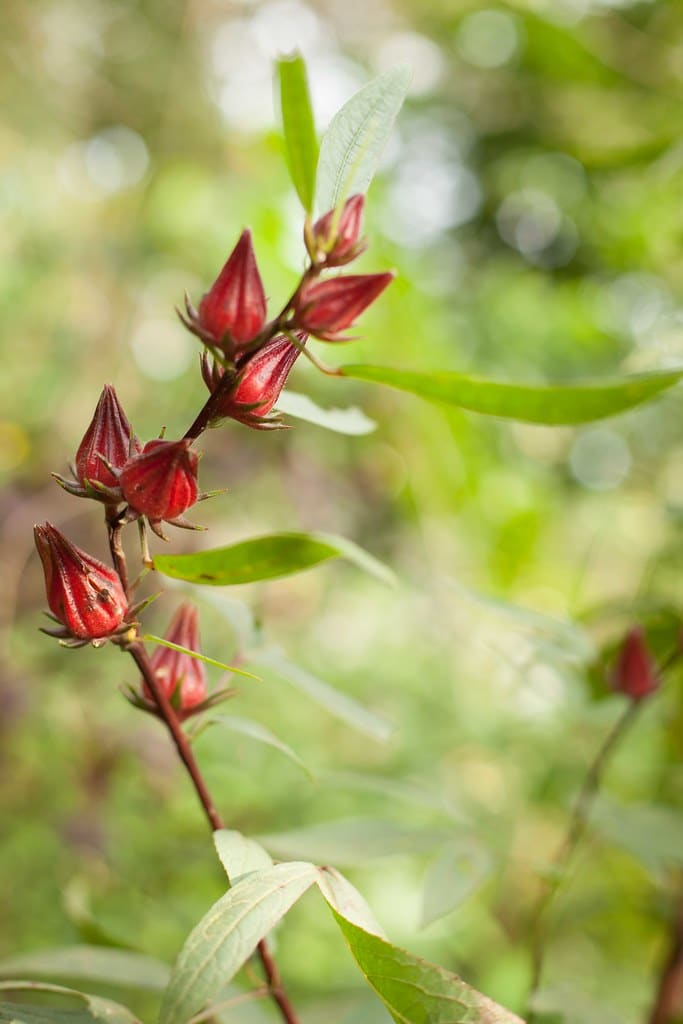
Rosa de Jamaica is quite popular among the different types of edible hibiscus.
Other names for it are; Karkade, Jamaican sorrel, and Florida cranberry, while its scientific name is Hibiscus sabdariffa.
Like most types of hibiscus, Rosa de Jamaica is an annual plant with broad leaves that can grow from 5-10 ft tall but can also be kept as a small shrub 2-5 ft if desired.
The leaves of this plant are alternate and green with reddish veins.
It strives well in full sun and regular water, producing striking pink, red, or crimson, vinous flowers throughout the year.
The plant is easy to grow and maintain. Hence, despite its tropical origins, it can also be grown in colder climates.
Here, one can grow this plant in pots due to its relatively small size so that it will be easy to be moved during cold weather since the plant prefers full sun and needs to be sheltered to ensure adequate sunlight during periods of colder weather.
Watering it once a day will suffice until the plant becomes mature. Its hardy nature will make it survive short frost spells, given adequate shelter and regular water.
The young leaves of Roda de Jamaican are tender and lemony-tart, which makes them an excellent, flavorful addition to salads.
In some parts of Africa, the leaves are consumed as a soup in three forms: The leaves are either cooked or steamed and crushed on a grinding stone, in which form it is considered a delicacy due to its preservation of the characteristic ‘tang’ (slightly sour taste) of the leaves.
Apart from its aesthetic value, this plant is also largely grown for its tart-tasting calyces (the fleshy encasement of its seed pods).
It is red and resembles cranberry in flavor. They are used to make hot and cold teas, popularly known as hibiscus tea which is considered rich in vitamins and minerals.
The drink is quite popular throughout the tropics with its signature red appearance.
In Jamaica, it is served chilled and is even considered the traditional Christmas drink, usually served with fruit cake or potato pudding.
It is also a popular beverage throughout Central and South America and is beloved by travelers.
Apart from its use as a vegetable and beverage, this hibiscus can also be used as a natural food colorant and in producing jam.
3. Okra

Okra is also among the popular types of edible hibiscus. It is known scientifically as Abelmoschus esculentus.
The plant is also known as ladies’ fingers, bhindi, bamia, and gumbo. Okra is a flowering plant valued for its edible green seed pod.
The plant is cultivated worldwide in tropical, subtropical, and warm temperate regions.
In Nigeria, it is among the principal vegetable crops in terms of consumption and production. Okra is a hot weather crop with an optimum soil temperature of 70°F to 90°F.
The plant has broad leaves with striking yellow flowers and can grow more than 2ft tall depending on variety, and its leaves are edible too.
The leaves make a wonderful addition to salad and can be eaten fresh or cooked, similar to dandelions.
The seed pod of okra is common in food from West Africa, Southern United States, the Caribbean, and India.
The immature pods, which contain a gum that makes thick, slimy mucilage, can be eaten as a vegetable and used to thicken soups and stews.
4. Mahoe Hibiscus

Mahoe Hibiscus goes by the botanical name Hibiscus tilaceus and is commonly known as sea hibiscus because it is salt tolerant.
It is a large shrub that can grow and mature up to 15 to 30 feet, depending on care and climate.
Like most hibiscuses, it prefers warm weather and must be taken indoors in winter.
Mahoe is a very beautiful plant that is grown largely for its aesthetics.
The plant has large heart-shaped leaves decorated in a unique marbleized tricolor – green and white with touches of red, especially on new growth.
It blooms abundantly and randomly in warm weather. The flowers are beautiful and have a very short life span.
A unique attribute of the mahoe flower is its ability to change color like a chameleon in a day.
The flowers start as yellow with a deep ruby/maroon eye and then gradually change to coral and deep red at the day’s end before dropping away the next day.
The plant is edible and makes a nice dish. The flowers can be added raw in salads, boiled like a green, or dipped in batter and fried, while the young leaves can be cooked and eaten.
The leaves can also be fermented into a sauce to make a tempeh starter or boiled in salted water to make a beverage called Onge Tea.
The roots are also edible when cooked or roasted. The inner bark, the cambium, is also edible though usually suckled of its moisture and nutrients.
5. Turk’s Cap
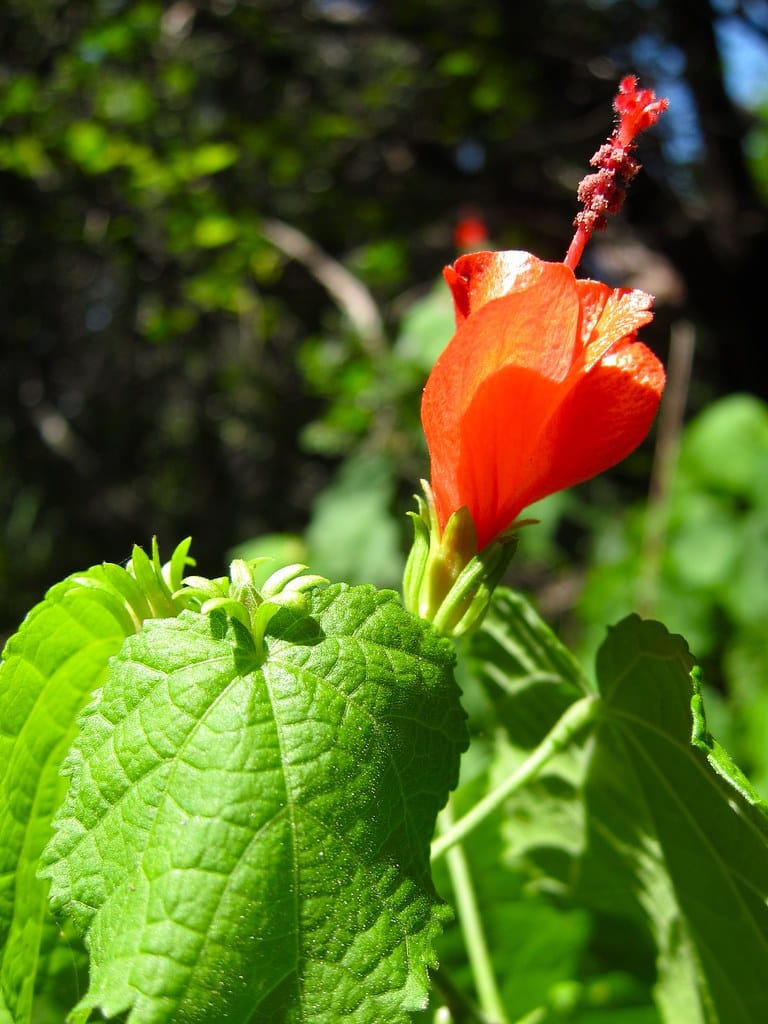
Turk’s cap goes by the common name Drummond’s mallow or Mexican apple and scientifically as Malvaviscus arboreus. The plant is native to Texas, the Southwestern US, and Mexico.
The plant grows about 4 or 5 feet tall and 3 to 4 feet wide and has large green leaves on thin, smooth, green woody stalks.
Turk’s cap is beautiful with distinctive flowers, continually producing throughout its long season.
Just as its name suggests, the flowers of Turk’s cap look like a Turkish turban in that its flowers never unfurl.
They stay partially rolled with their five petals, always in a tight swirl like a Turkish turban.
The flower buds have calyces with a distinctive, elongated crown shape surrounding the pointed bud within.
These flowers mostly come in red, but shades of pink and white are also available.
Turk’s cap also produces a small marble-size fruit that is edible. The fruit is dark reddish-orange when ripe and tastes like an apple with a little tartness, mainly a light sweetness.
One can consume the fruit of Turk’s cap raw though the seeds taste better when lightly toasted. The fruit can also be made into jelly, jam, or wine.
The leaves can be eaten as a vegetable, either raw or cooked. Turk’s cap flowers are also edible with a sweet taste.
They can be used as a garnish in salads or cakes. Flowers can also be used for tea. Turk’s cap is also among the types of edible hibiscus.
6. Cranberry Hibiscus
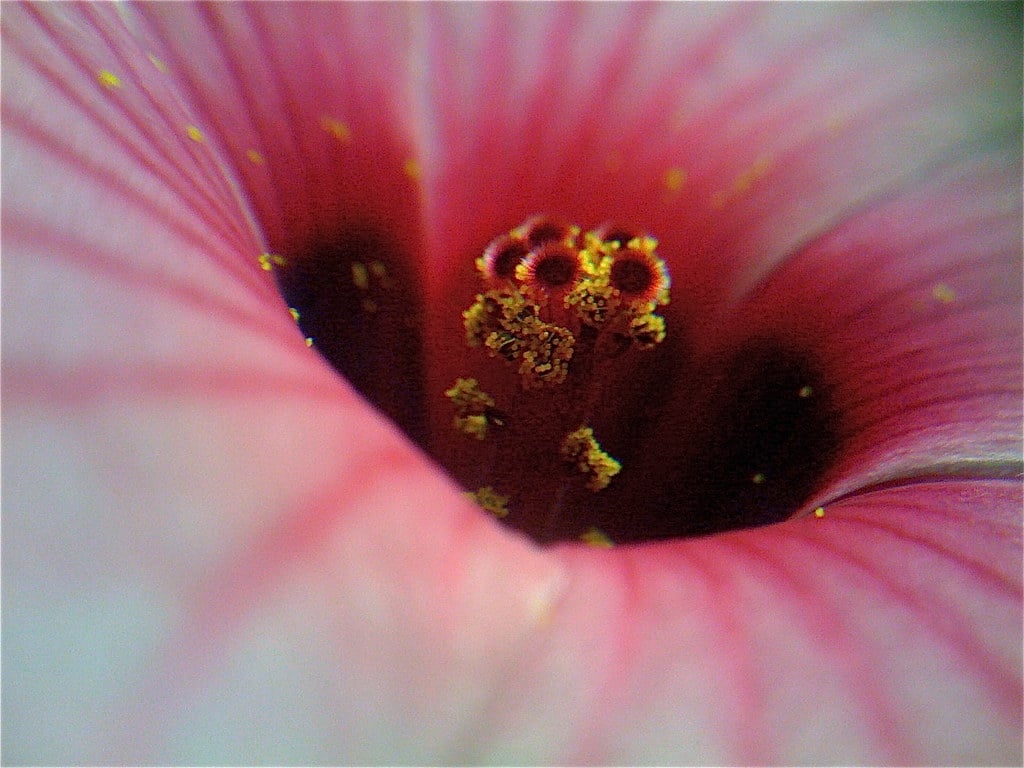
Cranberry hibiscus, known scientifically as Hibiscus acetosella, is a multi-stemmed shrub growing up to 3 to 6 ft.
The plant is gorgeous and is mostly grown for its ornamental prowess.
With their showy blooms of striking red flowers and deep purple-red leaves with serrated edges, the cranberry hibiscus makes a beautiful sight and a nice addition to the garden.
Beyond the garden, though, the cranberry hibiscus is a delight to the mouth as it is one of the different types of edible hibiscus.
Other names for cranberry hibiscus are; red shield hibiscus, false roselle, maroon mallow, and red-leaved hibiscus.
These names perfectly give one a description of these plants as it has gorgeous red blooms.
Although often confused for Rosa de Jamaica, the cranberry hibiscus is a different specie of the hibiscus plant.
One characteristic of the cranberry hibiscus plant is that, unlike rosa de Jamaica, the cranberry hibiscus is very hardy and can tolerate colder conditions.
Further, they are also more vigorous, last longer, and have larger flowers and tiny calyces that are not worth harvesting and aren’t used so much for teas.
As the name infers, cranberry hibiscus had a more tart and cranberry-like flavor than rosa de Jamaica.
The leaves of the cranberry hibiscus are tasty and can be consumed either cooked or raw.
They have a lemony-tart flavor which makes them a great addition to salads. The uncooked stems and blooms can also be used in stir-fries.
Although the leaves are nutritious-rich in vitamins, high in protein, and an excellent source of anthocyanins and antioxidants, they also contain oxalic acid. They should not be eaten in large amounts at a go or alone.
One can use these beautiful flowers to make teas and other beverages as they add color rather than taste.
In Central America, cranberry hibiscus flowers are combined with ice, sugar, lemon or lime juice, and water to make purple lemonade.
7. Rose of Sharon
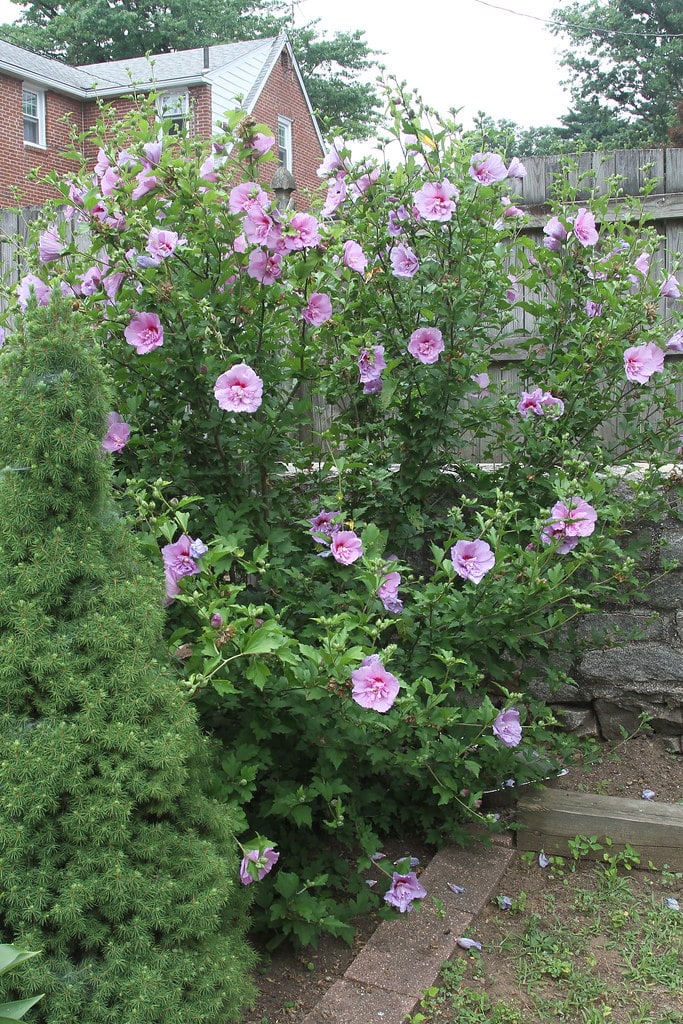
Next on our list of types of edible hibiscus is the Rose of Sharon. This plant goes by the botanical moniker- Hibiscus Syriacus.
Some other common names for it are; Althaea, Shrub Althea, and Hardy Hibiscus.
Rose of Sharon grows up to 12 feet tall and spread out nearly as wide.
The plant survives many weather and soil types and does well even in temperate climates.
The plant grows moderately fast, and the edible leaves stay fresh and attractive from spring, summer, and fall.
It also puts out lovely large flowers produced in summer when few other shrubs bloom. The flowers come in varying shades of white, pink, red, purple, and blue.
Although this plant is valued for its aesthetics, it also makes a wonderful addition to the kitchen.
The leaves of Rose of Sharon taste like lettuce and have a mucilaginous texture, which is pretty refreshing. They make great lettuce substitutes in salads or sandwiches.
Because of their mucilaginous texture, they also make great thickening agents for soups and sauces.
The blooms, which have a nutty flavor and a hint of nectar at the base of the petals, also make a great alternative vegetable in culinary.
These beautiful petals add some visual spunk and a mild taste to the dish. They can be eaten raw or cooked, while the flowers and dried leaves can also be used as tea.




